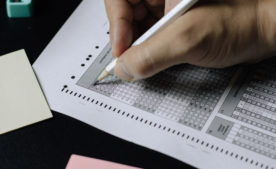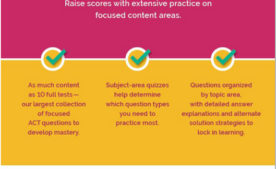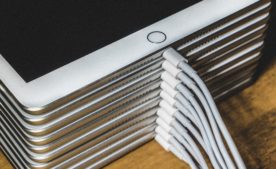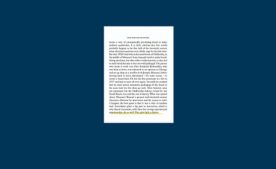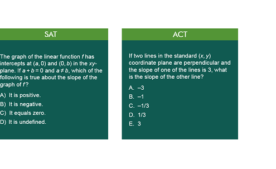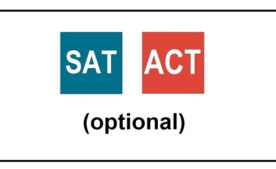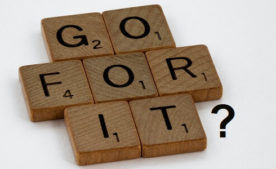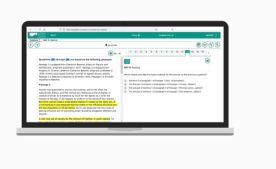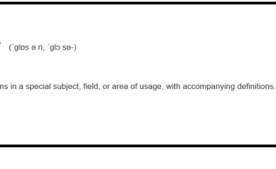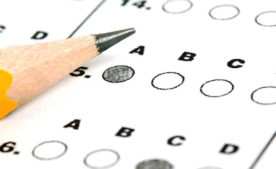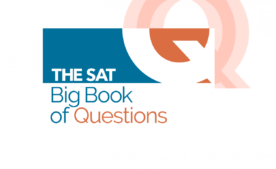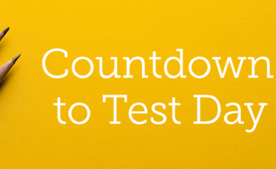The Digital PSAT and SAT math sections measure students’ skills in pre-algebra, statistics, algebra, and geometry.
Questions appear in two formats: multiple choice and student-produced response. Unlike multiple-choice (MC) questions, student produced response (SPR) questions do not provide answer choices, so students must type in their own answers. These SPR questions also appear on the current paper SAT so the inclusion of these questions on the digital test is not new.
One aspect that is new for the digital PSAT and SAT is that calculators are now allowed throughout the Math section, so the ‘no-calculator’ math section that appeared on the paper version of the tests has been eliminated.
In addition, a Desmos-based graphing calculator is provided on the testing platform, called the Bluebook app, that students will use to take the digital tests. Understanding how to effectively use this calculator is key for students to hit their peak score.
Similar to the current paper tests, the digital PSAT and SAT Math section requires a deep understanding of a relatively small number of math topics which test fluency, conceptual understanding, and application. The successful student will not only understand how to solve an algebraic equation (fluency) but will also be able to create an algebraic equation or graph to model and solve a real-world problem (conceptual understanding and application).
Content Areas on the Digital PSAT and SAT
The digital PSAT and SAT math questions are divided into four content areas as shown below. Note that there is a lot of overlap in this content between the digital PSAT and SAT and the current paper test with the continued emphasis on algebra.
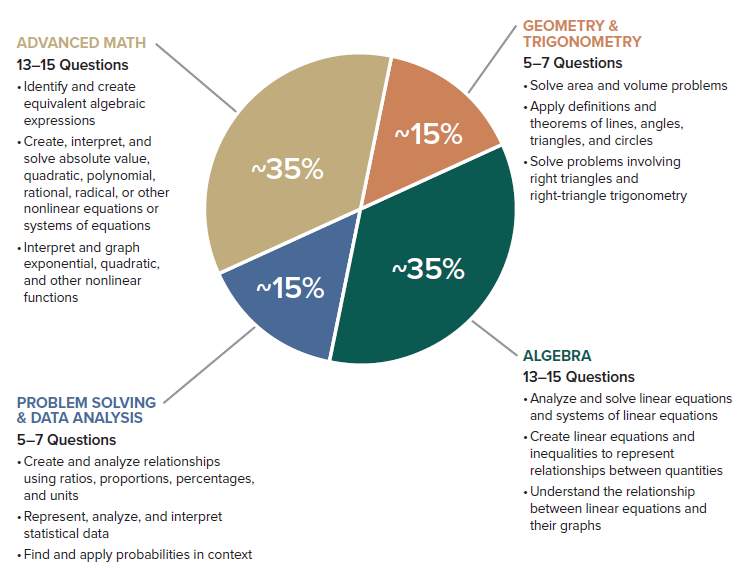
Digital PSAT and SAT math questions are phrased precisely and concisely. Most word word problems are phrased plainly in 50 words or fewer. More simple language is used to try to minimize the impact of reading comprehension in determining a student’s ability to answer a math question, while still presenting certain questions within real-world contexts.
Digital SAT Math Calculator App
The use of a graphing calculator is permitted throughout the Math section. The Bluebook Application even includes a built-in calculator that is almost identical in design to Desmos—a free, advanced graphing calculator which many students are already familiar with from their classrooms.
While a personal graphing calculator is very powerful and can always be used for this test, the built-in calculator is often more efficient. In addition, the in-app calculator provides a way to work out solutions side-by-side with the problems as they appear on the screen. It is a great tool to tackle even the most challenging questions.
Summit is ready for the digital PSAT and SAT
Although there are many similarities between math questions on the current paper tests and the new digital PSAT and SAT, there are important differences as discussed above. We have spent months overhauling all of the math content in our course books to offer the most accurate and effective SAT prep materials and 1-1 tutoring for this new test. We also included a very detailed section in our new math course book that teaches students how to use the built-in app calculator so they can fully utilize it to maximize their scores.
Remember, the new exam will only affect the current junior class and younger students. Current seniors who are testing again this fall will be unaffected by these changes.
We know that changes to the testing landscape can always cause some anxiety. Rest assured that we are ready for this new test and are here to help.
Questions? Please contact us at (800) MY-TUTOR or info@mytutor.com. We’d love to talk to you!




